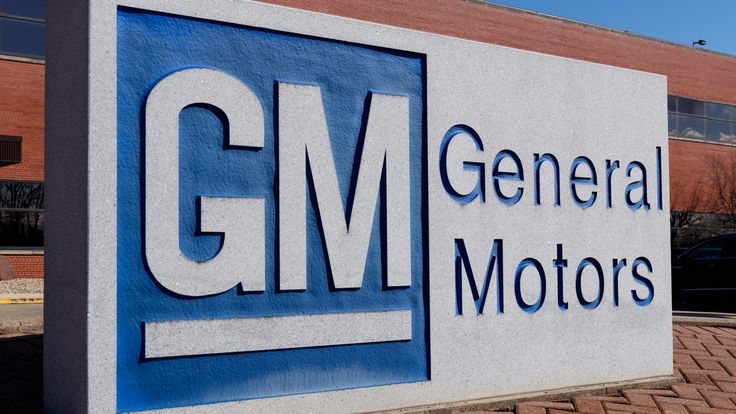When General Motors (GM) was founded in 1908 by William C. Durant, it didn’t set out to be just another car company. Instead, it pioneered a unique strategy that would shape the automotive industry for decades: acquiring multiple brands to serve different market segments. By bringing together Chevrolet, Buick, Cadillac, and other brands under one corporate umbrella, GM built an empire that offered something for everyone—from budget-conscious buyers to luxury enthusiasts.
The Multi-Brand Strategy: Why It Worked
Instead of producing a one-size-fits-all car, GM’s approach allowed it to dominate the market by catering to various customer needs and budgets. This was a direct contrast to the strategy employed by Ford at the time, which focused on mass-producing a single model, the Model T. GM’s approach provided buyers with options based on affordability, luxury, and performance, making it more adaptable to market changes.
Here’s how each brand played a key role in GM’s dominance:
- Chevrolet – Affordable and practical, Chevrolet became GM’s entry-level brand, appealing to the mass market. It was positioned as a direct competitor to Ford and provided a broad lineup of cars, from compact sedans to trucks, ensuring a wide reach.
- Buick – Positioned as a premium brand, Buick targeted buyers looking for more refinement, quality, and comfort without stepping into the ultra-luxury segment. It served as a stepping stone for consumers who wanted to upgrade from Chevrolet.
- Cadillac – Representing top-tier luxury and innovation, Cadillac competed with high-end automakers such as Packard, Lincoln, and later European luxury brands like Mercedes-Benz and BMW. Cadillac became a symbol of American prestige and was known for pioneering technology such as the first electric self-starter and V8 engines.
Beyond these core brands, GM continued to diversify:
- Oldsmobile – One of the earliest American car manufacturers, Oldsmobile became known for introducing innovative technology, including the first fully automatic transmission.
- Pontiac – Initially created as a companion brand to Oakland, Pontiac evolved into a performance-oriented division, producing some of the most iconic muscle cars in American history.
- GMC – While Chevrolet had its line of trucks, GMC focused on professional-grade vehicles, attracting commercial buyers and fleet operators.
This tiered branding strategy enabled GM to compete on multiple fronts, maximizing market share while ensuring that customers had an upgrade path within the company.
Acquiring and Expanding the Portfolio
GM didn’t just stop with its initial acquisitions. Over the years, it continued expanding its portfolio, adding brands like Saturn, Hummer, and Saab. This broad lineup allowed GM to cover nearly every segment, from muscle cars to SUVs, and later electric vehicles.
Durant’s vision for GM was not just about acquiring brands but also about leveraging economies of scale. By sharing components, engines, and chassis across brands, GM could reduce production costs while maintaining a diverse product lineup. This approach was particularly beneficial during the expansion years, as it allowed GM to introduce a variety of models quickly and efficiently.
Challenges and Restructuring
While the multi-brand strategy helped GM grow into an automotive giant, it also led to challenges. Maintaining so many brands proved costly, especially when consumer preferences shifted and some brands overlapped in market positioning. The redundancy in model offerings meant increased development and marketing costs, which sometimes led to internal competition between brands rather than external competition with rival automakers.
During the 2009 financial crisis, GM faced severe financial difficulties and was forced to restructure under government supervision. As part of this restructuring, GM discontinued several brands, including:
- Pontiac – Despite its performance heritage, declining sales and shifting market trends led to its discontinuation.
- Saturn – Originally introduced as an independent subsidiary with a focus on innovation, Saturn struggled to maintain a clear identity within GM’s lineup.
- Hummer – Known for its military-inspired SUVs, Hummer’s gas-guzzling nature clashed with the industry’s shift toward fuel efficiency.
- Saab – A Swedish brand acquired in 1989, Saab failed to find a sustainable market within GM’s framework.
By streamlining its operations, GM focused on its strongest brands: Chevrolet, Buick, GMC, and Cadillac, which continue to define the company today.
The Legacy of GM’s Strategy
GM’s acquisition strategy set the foundation for modern automotive corporations, influencing how companies like Volkswagen, Stellantis, and even Toyota structure their brand portfolios. The idea of offering cars at multiple price points under a single corporate umbrella revolutionized the industry, providing buyers with more choices while allowing automakers to capture a larger share of the market.
Even in the modern era of electrification and automation, GM continues to leverage its multi-brand strategy. With the rise of electric vehicles, GM is reintroducing the Hummer name under its GMC division as an all-electric supertruck, while Cadillac is positioning itself as a leader in luxury EVs.
While the company has faced ups and downs, its strategy of segmentation and market diversification has helped it remain a key player in the global automotive industry. The vision set forth in 1908 by William C. Durant continues to shape GM’s identity over a century later, proving that innovation and adaptability are key to long-term success.
